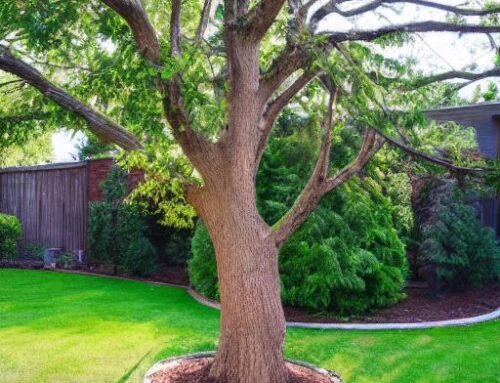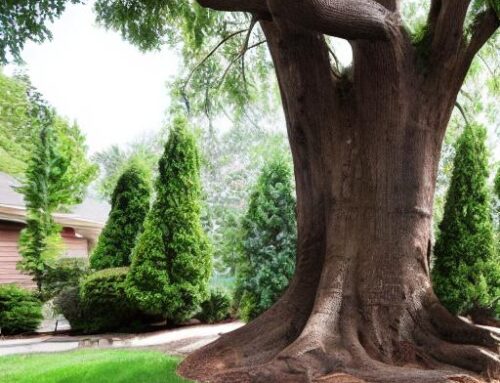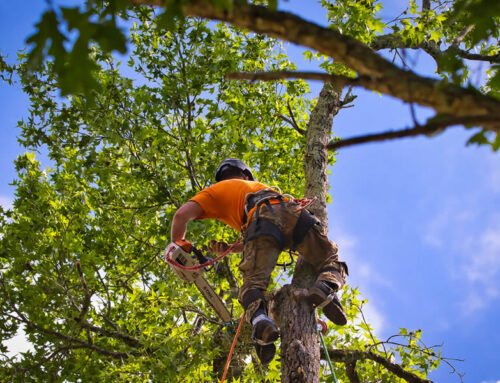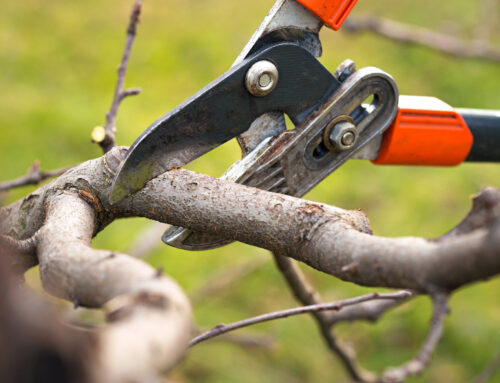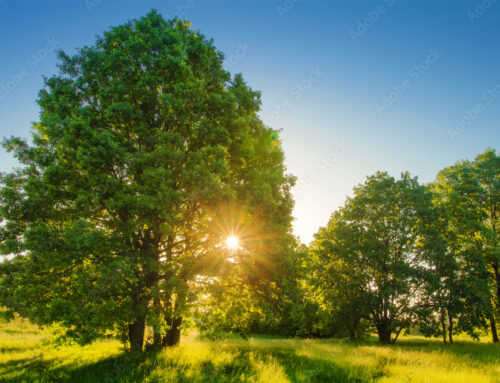When facing the decision between tree removal and preservation, it’s like standing at a crossroads with multiple paths ahead. The choices we make can significantly impact the landscape, safety, and ecosystem. Understanding the intricate balance between the value of trees and the necessity of removal is crucial. By evaluating factors such as tree health, risk assessment, preservation techniques, and ecological impact, we can navigate this decision-making process thoughtfully. Join us as we explore the complexities of choosing between tree removal and preservation, weighing safety, aesthetics, and ecology in a harmonious blend.
The Value of Trees vs. The Need for Removal
When weighing the value of trees against the necessity for removal, we must consider both the environmental benefits they provide and the potential risks they pose. Trees are not just silent observers of our lives; they are vibrant companions that offer us shade on sunny days, fresh air to breathe, and a sense of tranquility in our surroundings. Their presence creates a welcoming environment where we can gather, relax, and find solace in nature’s embrace.
As a community, we share a deep connection with trees. They are rooted in our memories, witnessing our joys and sorrows, growing alongside us through the seasons of life. Trees symbolize strength, resilience, and growth, teaching us valuable lessons about endurance and adaptation. When we stand beneath their branches, we feel a sense of belonging to something greater than ourselves, a part of a living ecosystem that sustains us all.
However, despite the profound value trees hold in our hearts, we must also acknowledge the potential risks they can pose. As they age, trees may become susceptible to diseases, pests, or structural weaknesses that could compromise their stability. In such cases, the decision to remove a tree becomes a necessary measure to ensure the safety of our community and prevent any harm that could result from a tree’s decline. It is a delicate balance between preservation and practicality, where we must consider the greater good while honoring the legacy of the trees that have stood the test of time.
Assessing Tree Health and Risk: A Professional Approach
Assessing tree health and risk requires a thorough examination by certified arborists to determine the best course of action for tree preservation or removal. At our company, we understand the emotional connection individuals have with their trees and the desire to ensure their well-being. Our team of experts conducts comprehensive assessments, considering factors such as structural integrity, signs of disease, pest infestations, and environmental stressors.
When we assess a tree, we look beyond what meets the eye. We delve into the tree’s history, growth patterns, and surrounding landscape to paint a holistic picture of its health and potential risks. By doing so, we can provide our clients with informed recommendations tailored to each tree’s unique situation.
Our approach emphasizes transparency and collaboration. We encourage our clients to ask questions, share their concerns, and actively participate in the decision-making process. Together, we can weigh the options of preservation versus removal, taking into account not just the tree’s current state but also its prospects.
Ultimately, our goal is to empower our clients to make the best choice for their trees and their property. By entrusting us with the assessment process, individuals can rest assured that they are receiving professional guidance rooted in expertise and a shared commitment to tree health and safety.
Preservation Techniques: When Trees Can Be Saved
Our team implements specialized preservation techniques to save trees in need of intervention. When we encounter trees that show signs of distress or disease, we employ various methods to help them thrive once again. One of the techniques we use is deep root fertilization, which provides essential nutrients to the tree, promoting growth and overall health. By injecting nutrients directly into the root zone, we ensure that the tree receives the necessary elements for its well-being.
Another approach we take is crown cleaning, where we selectively remove dead, diseased, or weak branches from the tree’s canopy. This process not only improves the tree’s appearance but also enhances air circulation and sunlight penetration, benefiting its growth. Additionally, we may perform crown thinning to reduce the tree’s density, allowing more light to reach the inner branches and stimulating new growth.
In cases where trees have structural issues, we implement cabling and bracing techniques to provide support and prevent further damage. By installing cables and braces, we can help trees withstand external forces such as strong winds or heavy snow loads, prolonging their lifespan. Our goal is to preserve trees whenever possible, and our team is dedicated to using these specialized techniques to save trees and promote a healthy urban forest.
The Decision-Making Process: Factors to Consider
In evaluating whether to remove or preserve a tree, we consider various factors to make an informed decision. Firstly, we assess the tree’s health. If the tree is diseased, infested with pests, or structurally compromised, removal might be the best option to prevent safety hazards. On the other hand, if the tree is healthy and adds value to the landscape, preservation could be more beneficial.
Secondly, we analyze the tree’s location concerning structures, power lines, and other trees. If the tree poses a risk of falling onto a building or interfering with power lines, removal might be necessary to ensure safety. However, if the tree is well-placed and enhances the overall aesthetics of the area, preservation should be considered.
Additionally, we take into account the tree species. Some trees are more prone to diseases or have invasive root systems that can cause damage. Understanding the characteristics of the tree species helps determine whether removal or preservation is the right choice.
Moreover, we consider the long-term maintenance requirements of the tree. Trees that need constant pruning, watering, or other care might not be suitable for preservation if resources are limited. Balancing the maintenance needs with the benefits the tree provides is crucial in the decision-making process.
Balancing Safety, Aesthetics, and Ecology
Considering the interplay between safety, aesthetics, and ecology is paramount when making decisions about tree removal or preservation. Our community values not only the safety of its members but also the beauty of its surroundings and the health of the environment. When evaluating whether a tree should be removed or preserved, we must carefully weigh these three factors to make the most informed choice.
Firstly, safety concerns are crucial. Trees that pose a risk of falling due to disease, damage, or proximity to structures can jeopardize the well-being of people and property. Prioritizing safety may sometimes necessitate the removal of a tree to prevent accidents or damage.
Secondly, aesthetics play a significant role in our community. Trees enhance the visual appeal of our neighborhoods, providing shade, habitat for wildlife, and a sense of tranquility. Removing a tree purely for aesthetic reasons should be approached thoughtfully, considering the impact on the overall landscape.
Lastly, ecology is vital for maintaining a healthy environment. Trees contribute to air quality, support biodiversity, and help mitigate climate change. Preserving trees, especially mature ones, is essential for the ecosystem’s balance and resilience.
Frequently Asked Questions
Are There Any Local Regulations or Permits Required for Tree Removal or Preservation?
Yes, there may be local regulations or permits required for tree removal or preservation. It’s essential to check with the authorities or local ordinances to ensure compliance with the necessary rules before proceeding with any tree-related activities.
How Do Different Tree Species Impact the Decision Between Removal and Preservation?
When considering how different tree species impact the choice between removal and preservation, we assess factors like growth rate, root structure, and health. These aspects guide our decision-making process, ensuring the best outcome for all involved.
What Are the Long-Term Effects of Removing a Tree on the Surrounding Ecosystem?
Reflecting on the long-term effects of removing a tree, we recognize the intricate web of interconnectedness in the surrounding ecosystem. Each tree lost disrupts habitat, alters water cycles, and affects biodiversity, emphasizing preservation’s vital role.
How Can Tree Preservation Impact Property Value and Resale Potential?
Preserving trees can significantly boost property value and resale potential. Our team knows the positive impact trees have on curb appeal and market interest. We believe in maximizing property value through smart tree preservation strategies.
What Are the Potential Costs Associated With Tree Removal Versus Tree Preservation in the Long Run?
When it comes to tree removal versus preservation, we’ve learned that costs can vary widely in the long run. It’s crucial to factor in maintenance, potential damages, and future benefits before making a decision.


